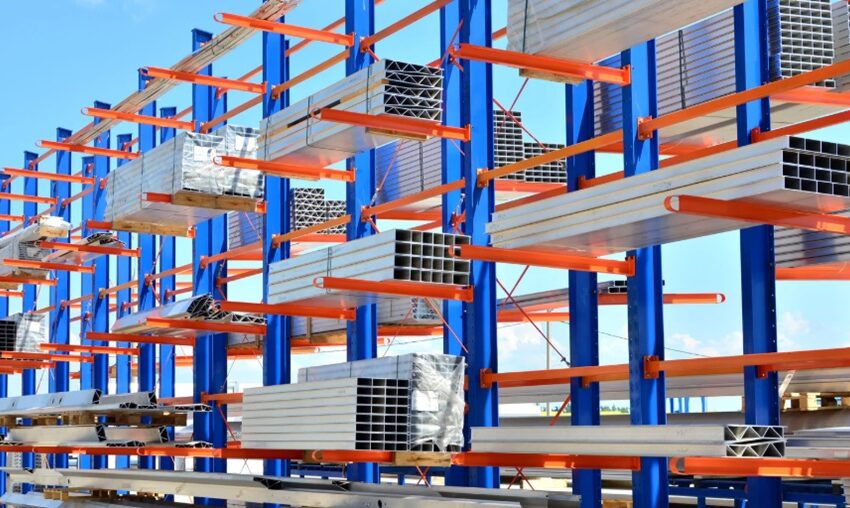If you live near a construction site, you know how disruptive the noise can be. It can impact your quality of life and make it difficult to focus or relax. Fortunately, there are solutions available to help mitigate the noise. One such solution is the use of construction sound barriers.
Construction sound barriers are temporary structures made of materials such as fibreglass, foam, or mineral wool that can be easily attached to fencing or scaffolding. They are designed to reduce noise pollution by absorbing or reflecting sound waves. Doing so can help create a more peaceful environment for communities near construction sites. But where are construction sound barriers most effective?
Understanding Sound Barriers
If you are working on a construction site, you know how loud and disruptive the noise can be. One solution to this problem is to use sound barriers, which are designed to reduce the amount of noise that escapes from the site. In this section, we will explore the different types of sound barriers, materials used for sound absorption, and the principles of sound barrier effectiveness.
Types of Sound Barriers
There are several types of sound barriers that can be used on construction sites. These include:
- Noise barriers: These are solid barriers that are designed to reflect or absorb sound. They are typically made from materials like concrete, wood, steel, or glass.
- Absorptive barriers: These are designed to absorb sound rather than reflect it. They are typically made from sound-absorbing materials like foam, fibreglass, or other acoustic barriers.
Materials and Sound Absorption
The choice of material used for a sound barrier can greatly affect its efficacy. Materials like concrete, wood, and steel are commonly used for noise barriers because of their mass and ability to reflect sound. On the other hand, absorbent materials like foam or fibreglass are used for absorptive barriers because they can absorb sound and reduce reverberation.
Principles of Sound Barrier Effectiveness
The effectiveness of a sound barrier depends on several factors, including:
- Mass: The greater the mass of the barrier, the better it will be at reflecting sound.
- Absorption: The ability of the barrier to absorb sound.
- Reflection: The ability of the barrier to reflect sound.
- Reverberation: The amount of sound that bounces back off the barrier.
Understanding the different types of sound barriers, materials used for sound absorption, and principles of sound barrier effectiveness can help you choose the right solution for your construction site.
Optimal Locations for Sound Barrier Implementation
When it comes to implementing sound barriers, the location is key to its effectiveness. Here are some optimal locations for sound barrier implementation:
Highways and Transportation
Highways and major transportation routes are some of the most common areas where sound barriers are implemented. The constant traffic and noise can be a major issue for residents living nearby. Installing sound barriers along these routes, the noise can be significantly reduced, making the area a more pleasant place to live.
Residential and Community Areas
Residential and community areas are another key location for sound barrier implementation. The noise from heavy machinery, construction projects, and traffic can be a major issue for residents. Installing sound barriers in these areas, the noise levels can be reduced, making it a more comfortable and peaceful environment for residents.
Construction Sites and Industrial Settings
Construction sites and industrial settings are also ideal locations for sound barrier implementation. The noise from heavy machinery and construction projects can be a major issue for workers and nearby residents. Installing sound barriers in these areas, the noise levels can be significantly reduced, making it a safer and more pleasant environment for workers and residents.
When implementing sound barriers, it is important to consider the safety issues and noise regulations in your area. Additionally, choosing the right noise barrier products is crucial for maximum effectiveness. Factors such as the height and length of the barrier, as well as the material used, can impact its effectiveness at blocking noise. Materials with high sound absorption and density, such as concrete and specialized acoustic panels, are typically more effective at reducing noise levels.
In Singapore, the use of sound-absorbing materials in the construction of these barriers further enhances their effectiveness. However, it is important to note that they can be costly to install and may require planning permission or permits from local authorities.
Health, Safety, and Environmental Considerations
Construction sound barrier is an effective solution to mitigate the impact of noise pollution on the health and well-being of residents and workers. Here are some factors to consider when implementing sound barriers on construction sites.
● Impact on Residents and Workers
Unwanted noise can have a negative impact on the health and well-being of nearby residents and workers. Exposure to high levels of noise can lead to hearing loss, stress, and sleep disturbance. Therefore, it is important to implement sound management measures, such as sound barriers, to reduce noise levels and create quieter zones in the vicinity of loud activities. This can contribute to a safer and more comfortable environment for both residents and workers.
● Regulatory Compliance and Noise Regulations
Regulatory compliance is an important consideration when implementing sound barriers on construction sites. The National Research Council of Canada (NRC) has developed guidelines for noise control in buildings and communities, which can be used to ensure compliance with noise regulations. It is important to consult these guidelines and any local noise regulations when designing and implementing sound barriers.
● Eco-Friendly and Sustainable Practices
Implementing eco-friendly and sustainable practices can also be a consideration when implementing sound barriers on construction sites. Vegetation, such as green roofs, can be used as a natural sound barrier, which can contribute to a more sustainable and eco-friendly construction site. Additionally, using recycled materials for sound barriers can reduce waste and contribute to a more sustainable construction industry.
Innovations and Technological Advancements
In recent years, there have been significant advancements in the materials and designs used in construction sound barrier solutions. High-quality noise barrier walls made from sound-dampening materials such as mineral wool, recycled rubber, and vinyl exterior are now widely available.
These materials are designed to absorb, reflect, and deflect sound energy, reducing noise levels and creating a quieter environment for crew members and nearby residents.
New designs such as stacked geometries and heavy-duty sound barriers are also being used to reduce noise levels. These designs are particularly effective at reducing mid to high-range sound frequencies and sound vibrations. Additionally, sound blankets, acoustic drapes, and acoustic drywall such as Quiet Rock are being used to reduce echoes and mid-range frequencies in music venues and recording studios.
Smart Construction Techniques
Smart construction techniques are also being used to reduce noise levels on construction sites. One such technique is the use of noise-dampening wheels on construction vehicles, which can reduce the noise generated by construction vehicles by up to 50%. Additionally, the use of planning permission to strategically place noise barriers is becoming more common.
Future Trends in Noise Barrier Development
As technology continues to advance, the future of noise barriers looks promising. Emerging trends include the use of sensors and adaptive systems in noise barriers, which can automatically adjust the barrier’s properties to reduce noise levels. Ease of installation is also becoming a key consideration, with noise barriers being designed to be quick and easy to install while still maintaining their effectiveness.
In conclusion, with the help of dedicated assistance, construction sound barrier solutions are becoming more effective than ever before. By using cutting-edge materials and designs, smart construction techniques, and future trends in noise barrier development, noise levels can be reduced, increasing productivity and creating a quieter environment for crew members and nearby residents.








